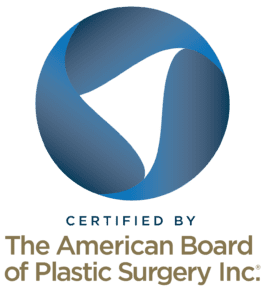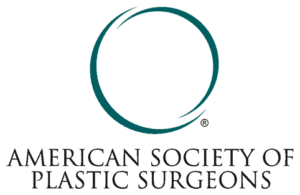
Ultimately, your breast augmentation post op experience will depend on your specific circumstances. This is because recovery will vary depending on your age, how well you typically heal from surgery, what type of breast implants you chose, the extent of your outpatient procedure, where your implants were placed (behind or in front of the chest muscles), and other factors.
At the same time, nearly all breast augmentation patients can expect certain symptoms such as swelling, bruising, and discomfort. Ahead, we’ll delve deeper into what you can expect in terms of breast augmentation post op progress, including common symptoms, when you can resume normal activity, and when you’ll see results.
Breast Augmentation Recovery Symptoms
Below are some common symptoms you may experience during your breast augmentation recovery process.
Bruising and Swelling
From 1 day post op breast augmentation until about six months out from surgery (or sometimes longer), swelling will be present. It will be worst at first, then gradually subside.
Bruising is also normal at the beginning of the healing process, but bruises should disappear within a few weeks for most patients. Wearing a compression garment as recommended by your surgeon can help reduce swelling and promote healing.
Pain and Discomfort
Day 1 and day 2 post op breast augmentation, it’s normal to have pain. After this point, the discomfort should begin to ease.
Fortunately, you’ll have pain medications available, and if allowed by your surgeon, sometimes using ice packs can alleviate some of the discomfort and swelling as well.
Sensation Changes
Temporary changes in sensation, such as numbness, tingling, or hypersensitivity in the breasts and nipples are common after breast augmentation. These sensations typically resolve as the nerves and breast tissue repair themselves.
Feelings of Tightness
You may experience tightness in the chest area as your body adjusts to the presence of implants. This is especially true when implants are placed behind the pectoral muscles and the muscles need to adjust to a new position. This should gradually improve as you heal.
Returning to Normal Activities After Breast Augmentation
When Can I Return to Work?
The timeline for returning to work will vary depending on the nature of your job and how quickly you heal.
Typically, most patients can return to desk work within a few days to a week after breast augmentation surgery. But if your job requires a lot of physical activity, you may need to wait about three weeks or longer before going back.
When Can I Resume Exercise?
It is very important to refrain from heavy lifting, strenuous physical activity, and everyday activities that could strain your chest muscles for at least four to six weeks following breast augmentation surgery.
Extreme cardio and chest exercises are to be avoided. You may take short walks, however, to improve blood flow and avoid blood clots.
Your surgeon will provide specific guidelines on when it’s safe to resume exercise based on your individual recovery progress. When you do return to things like running and sports, wear a surgical bra or supportive sports bra and go slowly.
Follow Up Appointments with Your Surgeon
After your breast augmentation surgery, you’ll have several follow up appointments with your plastic surgeon. These appointments are very important for monitoring your healing progress and addressing any potential concerns.
Your surgeon will have laid out a breast augmentation recovery week by week plan for you to follow.
At these appointments, your surgeon will ask you questions, look at your incisions and progress, help to prevent infection, and assess how your implants are settling. Be sure to attend all of these appointments as each one is critical to your recovery time.
Breast Augmentation Results Timeline
While you might see some immediate changes in the appearance of your breasts after surgery, it can take a few months for your final results to appear.
Ultimately, as swelling and bruising gradually subside, you will be able to see the full benefits of your breast augmentation procedure. Stay the course and adhere closely to all of your surgeon’s post operative instructions.
What Does Drop and Fluff Mean Following Breast Augmentation?

As this eases, however, your implants will have a chance to loosen up and settle. This is dropping and fluffing.
About 1 week post op breast augmentation, you’ll notice that most of the initial swelling has gone down, and your implants should begin to drop down and “fluff out” the lower portion of your breasts.
Your muscles should also begin to relax during this time, so you should start to feel less tightness.
Swelling and muscles tightness may linger for a few months following this as well, but these symptoms will continue to slowly dissipate.
As this occurs, you’ll notice your implants “dropping and fluffing” even more. For some patients, it may take up to six months or longer for all swelling to fully disappear and for your breasts to have fully settled.
FAQs: Breast Augmentation Recovery
How will my breasts feel after breast augmentation?
In the days and weeks following breast augmentation surgery, your new breasts may feel swollen, tender, and tight. You may also experience temporary changes in sensation, like tingling or numbness.
Be sure to continue wearing your post op breast augmentation bra, and closely following your surgeon’s instructions. The sensations mentioned above are normal, but in the rare case of a complication, your surgeon will also give you a list of risk-related symptoms and sensations to be on the lookout for.
How can I manage post breast augmentation pain?
When necessary, you will have pain medication available to help manage any pain you may experience as you recover. Always use these medications as directed, and take other advice to avoid discomfort. Many patients can switch to over the counter medications in a week or so.
You should be avoiding strenuous activities, resting a lot, drinking plenty of water, and eating a healthy diet. If your surgeon allows it, applying ice packs according to specific directions can sometimes aid with swelling and discomfort.
Do breast augmentation scars ever go away?
With proper aftercare and avoiding strain, breast augmentation scars typically flatten and transition from red to pink within 2-3 months. Complete healing is expected within 6-12 months.
Call Today to Set Up a Personal Consultation
Board certified plastic surgeon Dr. Ashley Steinberg specializes in all types of breast plastic surgery, including breast augmentation, mastopexy (breast lift surgery), breast reduction surgery, and similar procedures.
If you’ve been thinking about breast implants and would like to discuss your options with an experienced breast augmentation surgeon in the Houston area, please call today to schedule your initial consultation session with Dr. Steinberg.
References
https://www.plasticsurgery.org/news/blog/what-does-drop-and-fluff-mean-after-breast-augmentation













